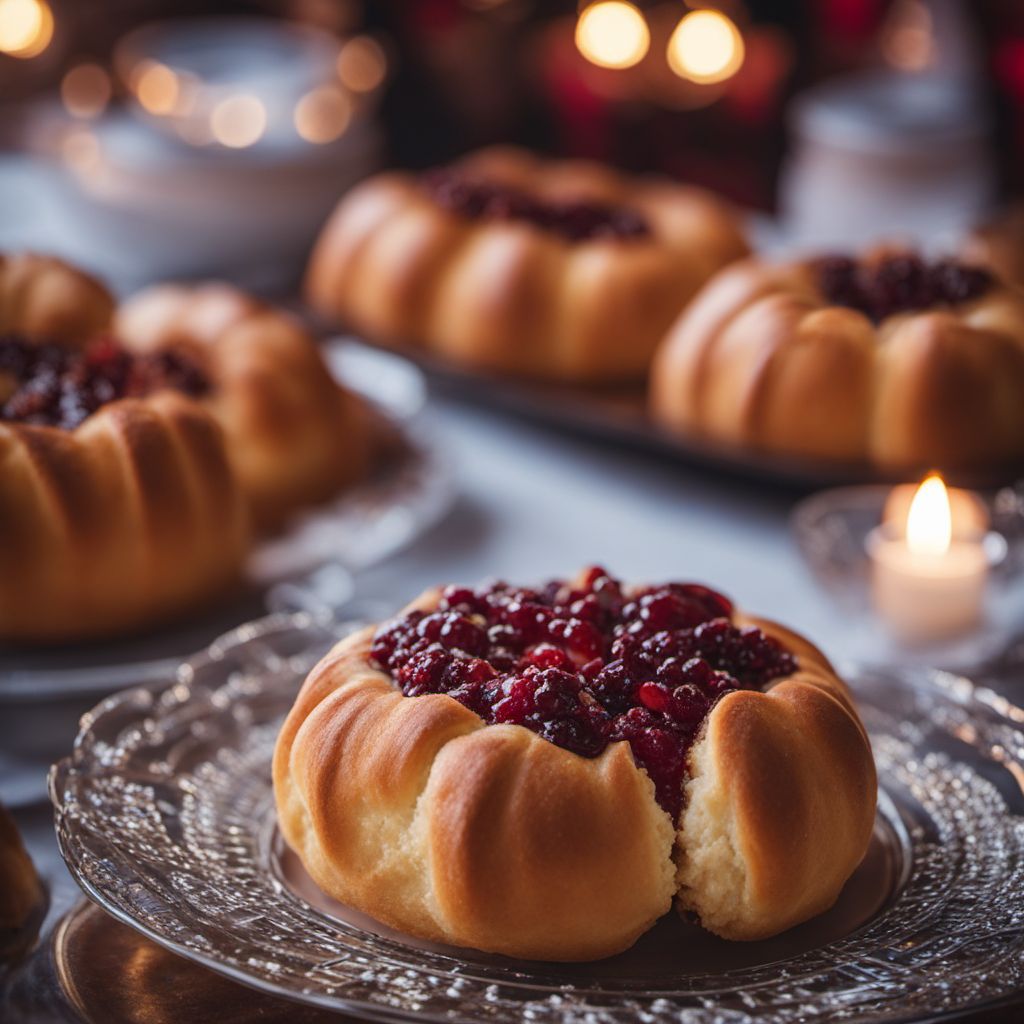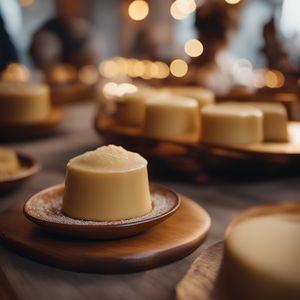
Dish
Kliņģeris
Kliņģeris is made by preparing a sweet yeast dough and then rolling it out into a thin sheet. The sheet is then cut into triangles and filled with a variety of fillings such as jam, nuts, or poppy seeds. The triangles are then rolled up into a crescent shape and baked in the oven until they are golden brown and crispy. The pastries can be served warm or cold and are often dusted with powdered sugar. They are a popular pastry in Latvia and are often served during special occasions such as weddings or holidays.
Origins and history
Kliņģeris has been a traditional Latvian pastry for many years. It is believed to have originated in the 18th century and was often served during special occasions such as weddings or holidays. Today, the pastry is still a popular treat in Latvia and is often served during special occasions.
Dietary considerations
Kliņģeris is not suitable for those with nut allergies or gluten intolerance. It is suitable for vegetarians.
Variations
There are many variations of Kliņģeris that include different types of fillings such as cheese or fruit. Some recipes also call for the addition of spices such as cinnamon or nutmeg to give the pastry a richer flavor.
Presentation and garnishing
Kliņģeris is typically presented on a platter and garnished with a dusting of powdered sugar or a sprig of fresh mint.
Tips & Tricks
To ensure that the pastry is crispy and golden brown, it is important to brush the tops of the pastries with an egg wash before baking. This will help to give the pastries a shiny and golden brown crust. If you want to make the pastry more savory, you can add cheese or meat to the filling.
Side-dishes
Kliņģeris is often served as a dessert or snack on its own. It can also be served with a cup of tea or coffee.
Drink pairings
Kliņģeris is often served with a cup of tea or coffee. It can also be served with a glass of sweet wine such as Riesling or Gewürztraminer.
Delicious Kliņģeris recipes
More dishes from this category... Browse all »

Ageeli
Yemeni cuisine

Agnello pasquale
Italian cuisine

Agnes Bernauer Torte
German cuisine

Amygdalopita
Greek cuisine

Angel Food Cake
American cuisine

Apfelkuchen
German cuisine

Arnadí
Spanish cuisine

Baked Alaska
American cuisine




